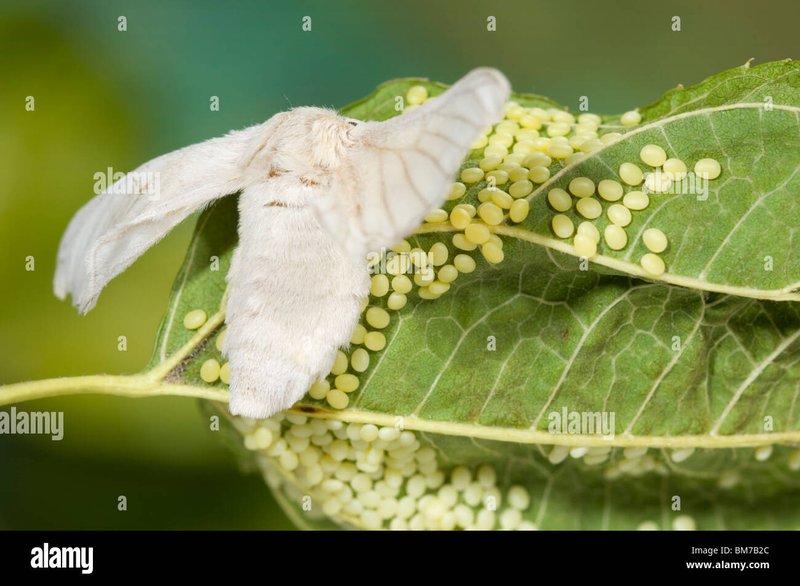
Silkworm moths are part of the life cycle of the Bombyx mori species, which is famously known for its silk production. Once these moths lay their eggs, new life is set to begin. But don’t just leave the moths there once they’ve done their job. You might be wondering about the best practices for handling the moths post-egg laying, and how to ensure the survival of their eggs. Let’s break it down together!
Understanding the Silkworm Life Cycle
Before diving into what to do with the moths, it’s key to grasp the silkworm life cycle. Silkworms start as tiny eggs, which hatch into larvae, or caterpillars, that eat and grow rapidly. They then pupate into moths, which is the stage where they lay eggs. Once the moths finish this task, they’ve completed their life cycle.
After laying eggs, the silkworm moths might appear to be less active. This is normal, as they’ve spent a lot of energy. Think about it: after completing a big project at work, we all want a break! The moths will likely not survive long after laying their eggs, often just a few days. So, what are your options for dealing with the moths now?
Letting Nature Take Its Course
One option you can consider is simply letting nature take its course. After laying eggs, the silkworm moths typically have a short lifespan, usually around 5-10 days. During this time, they’re not particularly useful for breeding since their primary function is done.
Many breeders choose to let the moths live out their last few days undisturbed. They don’t need food and are more focused on mating and egg-laying than anything else. Just make sure they’re in a safe space where they won’t be disturbed by pests or environmental factors.
Collecting and Disposing of Moths
If you prefer a more hands-on approach, you could collect the moths after they have laid their eggs. It’s a gentle task, and here’s how to go about it:
- Prepare a container: Get a soft, breathable container where you can place the moths. This helps keep them from getting squished or stressed.
- Gently handle: Use a light touch when handling the moths. They’re fragile and can be easily harmed. Think of it like holding a feather!
- Disposing: You can either release them outside where they can fulfill their short life in nature, or if you’re in a controlled environment, you might choose to dispose of them properly.
This might feel a bit morbid, but remember: it’s all part of the cycle of life!
How to Care for the Eggs
Now that you’ve dealt with the moths, let’s talk about the eggs. If you want to ensure a healthy hatch, here’s what to keep in mind:
1. Temperature & Humidity: Silkworm eggs need specific conditions to thrive. Aim for a temperature of around 70°F (21°C) and a humidity level of around 80%. This is crucial for the eggs to develop properly.
2. Safe Space: Place the eggs in a clean, well-ventilated area. Make sure there are no drafts or direct sunlight hitting them. If you think about it, it’s similar to creating a cozy nook for a seed to sprout.
3. Monitor Regularly: Keep an eye on the eggs as they incubate. You might see tiny caterpillars (larvae) popping out after about 10-14 days, depending on the conditions.
Feeding the Hatchlings
Once those little caterpillars start hatching, they’ll need food. A lot of food! Here’s how to keep them well-fed:
– Mulberry Leaves: The preferred diet of silkworm larvae is fresh mulberry leaves. If you can get them, great! If not, you’ll need to source mulberry leaf powder as a substitute.
– Quantity: These little guys are voracious eaters, so be prepared to provide plenty of leaves. They can consume around 3,000 times their body weight in food before they pupate!
– Cleanliness: One thing to keep in mind is keeping their area clean. Remove any uneaten food or waste regularly to avoid mold or pests.
Breeding for the Future
If you’re thinking about continuing this wonderful silkworm journey, breeding the next generation is what it’s all about. Here are some pointers for successful breeding:
– Select Healthy Moths: If you’re planning to breed again, choose healthy moths that display strong traits. Look for ones that feed well, grow quickly, and have vibrant colors.
– Timing: Make sure to time your breeding correctly. It’s essential to ensure the right conditions, especially with temperature and humidity, for the eggs to hatch successfully again.
– Variety: Consider experimenting with different types of silkworms. While Bombyx mori is famous for silk production, there are other varieties you might want to explore.
So, after silkworm moths lay their eggs, you’ve got a few options to consider. Whether you let nature take its course or take a more hands-on approach, the key is to ensure the survival of their eggs. By providing the right conditions for those eggs, along with feeding and caring for the future larvae, you’re contributing to this incredible lifecycle.
Silkworms can be a rewarding hobby, offering lessons in patience, care, and even a little bit of science. Just remember, as rewarding as it is, the goal is to enjoy the process as much as the results. Happy breeding!

